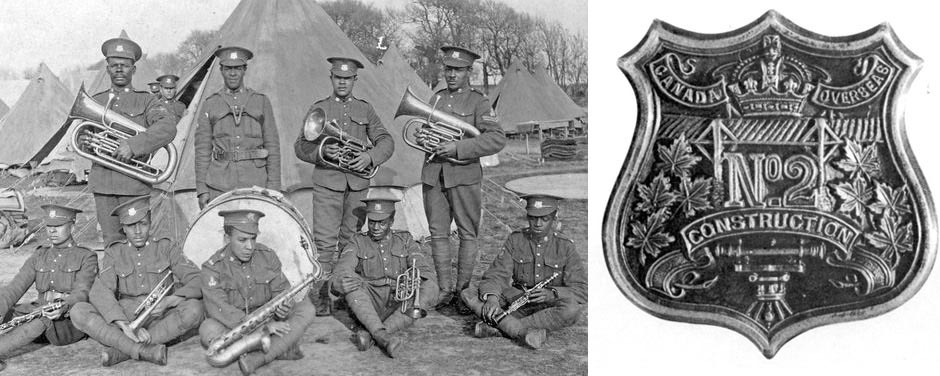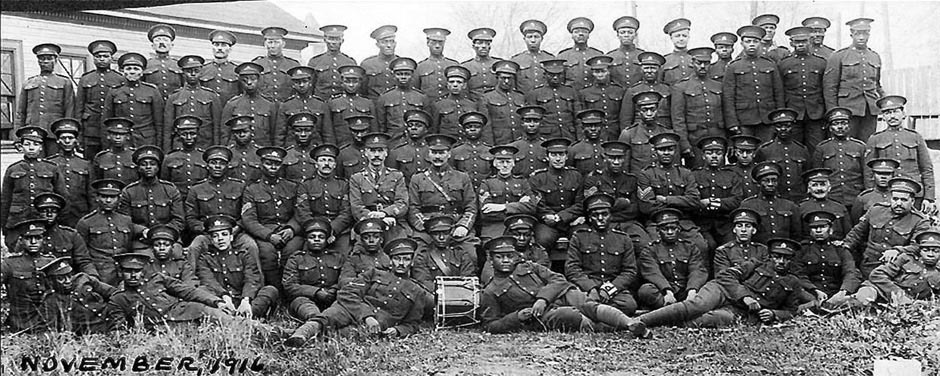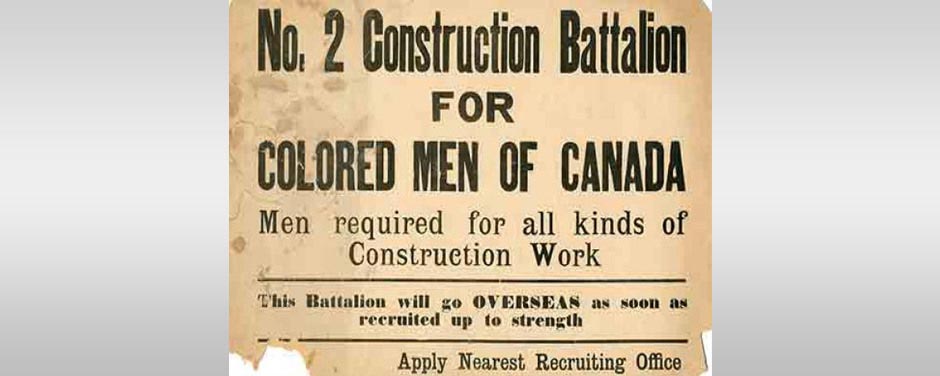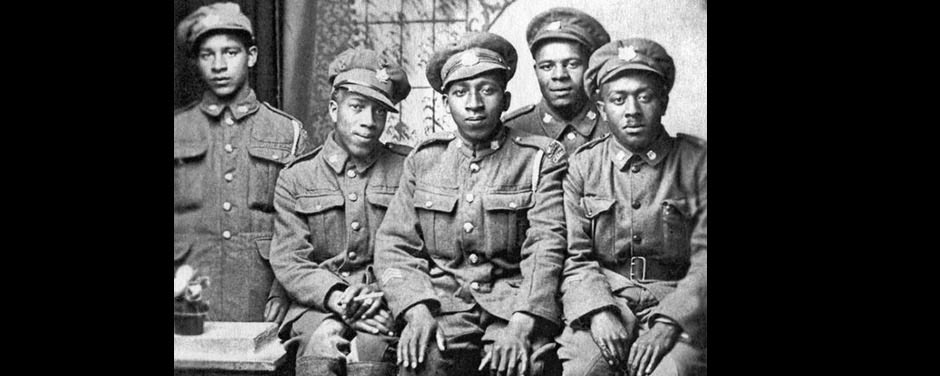No. 2 Construction Battalion
Apology Event 09 July 2022
In 1917, the brave men of No. 2 Construction Battalion left Halifax to deploy overseas in support of Canada’s war efforts. Over 600 soldiers from across Canada and as far as the West Indies showed unrelenting courage and perseverance to enlist and serve their country in the face of racism, prejudice and hate. Despite their sacrifices, when they returned home, they were not entitled to any recognition. An entire community was deprived of its heroes.
To acknowledge the contributions and sacrifices of the members of No. 2 Construction Battalion and their families, an official apology parade and ceremony was held on Saturday, July 9, 2022, at the Truro Amateur Athletics Club Grounds in Truro, Nova Scotia.
You can watch the No. 2 Construction Battalion National Apology event on the Black Cultural Centre for Nova Scotia YouTube Channel.
URL: https://youtube.com/channel/UCvhchr5qdce12SScEvKGiPw
News Releases
- Apology Announcement News Release
- Recommitment to Apology News Release
- 105th Anniversary News Release
- No. 2 Construction Battalion Awarded ‘France and Flanders, 1917-18’ Battle Honour
- Prime Minister delivers apology to descendants of No. 2 Construction Battalion
- National Apology Advisory Committee - Minister of National Defence Report
Video and Articles
Recommendations
The National Apology Advisory Committee (NAAC) submitted eight recommendations outlining the collective voices of No. 2 Construction Battalion descendants on their vision of a meaning national apology in a report to The Honourable Anita Anand, Minister of National Defence on 24 May 2022.
On 28 March, 2021, the Government of Canada announced its intent to apologize for the treatment that members of No. 2 Construction Battalion endured before, during, and after their service to Canada during the First World War. The intent to apologize was reaffirmed on 28 March, 2022 by Defence Minister Anita Anand.
A 22-member National Apology Advisory Committee (NAAC) was established in June 2021 as a consulting arm to the Government of Canada in the shaping of the upcoming official apology. Comprised of community leaders, historians and No. 2 descendants serving as volunteers, NAAC is co-chaired by Lieutenant-Colonel Barry Pitcher representing the Canadian military and Russell Grosse, executive director of the Black Cultural Centre for Nova Scotia, the event partner.
The National Apology Advisory Committee and the Black Cultural Center for Nova Scotia (BCCNS), in collaboration with the Canadian Army, has led seven Canada-wide virtual consultations to inform the apology and related events. These consultations were held in December 2021, February, March and April 2022.
As at the end of April 2022, 690 descendants of No. 2 Construction members had participated in these consultations.
Recommendations
Remembrance, Reconciliation and Perpetuation were identified as the three key themes to set the framework of a meaningful apology on behalf of the Government of Canada. The recommendations listed:
- That a heartfelt and meaningful apology be delivered by the Prime Minister of Canada. This will be vital as precedence has been set in past Government of Canada apologies that have been delivered by the Prime Minister.
- That the Minister of National Defence be instrumental in the apology process and ensuring that processes are in place to address the past hurts going forward. This will be the active commitment to culture change with Canada’s Armed Forces.
- That a national public event surrounds the Apology that pays tribute and honour to No. 2 Construction Battalion and provides meaningful remembrance.
- That it include a commitment to ongoing substantive and sustainable policy/program responses that address anti-Black racism within the Canadian Armed Forces.
- That it includes establishment of and support to a long-term legacy fund that creates ongoing opportunities for education, remembrance and honouring of No. 2 Construction Battalion.
- That it be accompanied with a memento to descendants and families of No. 2 Construction Battalion.
- That the apology process be only the start of future discussions on No. 2 Construction Battalion and all Black serving members (past and present) who have faced anti-Black racism.
- That the apology is followed up with establishment of a Minister’s Advisory Committee on Anti-Black Racism to advise the Minister of National Defence and senior Canadian Armed Forces leadership on a concise path forward to embrace culture change.
Backgrounder
No. 2 Construction Battalion, Canadian Expeditionary Force (CEF) — also known as the Black Battalion — was created on 5 July 1916, during the First World War. It was a segregated non-combatant unit, the first and only all-Black battalion-sized formation in Canadian military history.
BRIEF HISTORY
Not dissimilar to many others across the nation emboldened by the stirrings of excitement and the notion of patriotism initially brought about by the First World War (1914-1918), young Black Canadians were eager to serve King and country. The racist attitudes held by many Canadians at the time, as well as those in charge of military enlistment, made it difficult for Black Canadians to join the Canadian Expeditionary Force (CEF).
In spite of these obstacles, Black Canadians wanted the right to do their part and to serve a country that largely saw them as less than equal. While some Black men were able to enlist in CEF battalions prior to mid-1916, the majority were rejected. Black communities across Canada put pressure on the government and military officials for nearly two years. This would eventually pay off with the authorization of No. 2 Construction Battalion in 1916, which allowed a larger number of Black men to serve. Just over a year later, on 29 August 1917, the Canadian government passed the Military Service Act to reinforce depleted troops overseas. With some exceptions, the Act made all British subjects between the ages of 20 and 45 currently, or previously, residing in Canada since 4 August 1914 liable for active service. Black men, who were previously turned away from enlistment due to the colour of their skin from 1914 to 1916, were now subject to conscription.
On July 5, 1916, No. 2 Construction Battalion was formed in Pictou, Nova Scotia. On 9 September 1916, No. 2 Construction Battalion’s headquarters were relocated to Truro, Nova Scotia, to accommodate the size of the unit. Recruitment took place across the country and more than 600 men were eventually accepted, most coming from Nova Scotia, with others were from New Brunswick, Ontario, the West, and even from the United States and the West Indies. The Black Battalion’s only Black officer to deploy overseas was Reverend William Andrew White, who was given the rank of Captain, and had played a role recruiting Black soldiers for the battalion and applying pressure on the military to accept Black soldiers.
No. 2 Construction Battalion was segregated and as a construction unit, it was tasked with non-combat support roles. After initial service in Canada, where it was tasked to remove rails from railway sidings in New Brunswick that would be shipped to France to support the war effort, the battalion boarded the SS Southland bound for Liverpool, England on 28 March 1917. After arriving in England on 7 April, No. 2 Construction Battalion was reorganized as a British-style labour company and its members were sent to the Jura Region in eastern France on 17 May 1917, where they served honourably with the Canadian Forestry Corps. There, they helped cut the timber, transport it to the lumber yards, cut it into a finished product and move it to a railhead for use in building and reinforcing trenches. They also maintained local logging roads, operated the water and electrical systems for their camps, used and cared for horses required for hauling lumber, and operated and maintained complex machinery such a rock crushers, a steam drill and a steam roller. Some of the members of No. 2 Construction Battalion also assisted in constructing a 3.21km (two-mile), 61cm (24- inch) gauge logging railroad, and some may have even helped to operate it. A little known task of the men of No. 2 Construction Battalion was to supervise Russian soldiers sent to their camp as labourers in January 1918.
After the end of First World War hostilities on 11 November, 1918, the men sailed to Halifax in early 1919 to return to civilian life. As they were recruited from across the country, the men originally part of No. 2 Construction Battalion were divided and returned to their home provinces with other returning soldiers from those areas. Most returned to face the same discrimination as when they left for the war.
The unit was officially disbanded in September 1920. Some veterans of the Black Battalion are buried in Camp Hill Cemetery in Halifax. The men of the Black Battalion would not receive public recognition until decades later. On 12 November 1982, Senator Calvin W. Ruck and the Black Cultural Centre of Nova Scotia hosted a recognition and reunion banquet at the Lord Nelson Hotel in Halifax for nine Black veterans of the First World War. Senator Ruck went on to write The Black Battalion 1916–1920: Canada’s Best-Kept Military Secret (1986). This book details the formation of No. 2 Construction Battalion and profiles its veterans.
Other commemorations of the battalion include a monument at Supt, France near the site where the battalion had its camp, a plaque commemorating the dead of No. 2 Construction Battalion located in the Ontario Legislature which was unveiled in July 1920, and a plaque in Shelburne, Ontario, unveiled in November 2021. In 2002, No. 144 Construction Engineering Flight of the Royal Canadian Air Force in Pictou, NS dedicated a plaque to the battalion. The plaque is located in their headquarters building. An annual commemoration ceremony for No. 2 Construction Battalion is held in Pictou with 4 Engineer Support Regiment, and Canada Post launched an official stamp on 1 February 2016 to mark the 100th anniversary of the Black Battalion. In addition, the film Honour Before Glory (2001), written and produced by Reverend William Andrew White’s great nephew Anthony Sherwood, and the poem “Black Soldier’s Lament” by George Borden, honour the soldiers of No. 2 Construction Battalion.
APOLOGY AND TODAY’S CAF
On 28 March, 2021, the Government of Canada announced its intent to apologize for the treatment that members of No. 2 Construction Battalion endured before, during, and after their service to Canada during the First World War. The intent to apologize was reaffirmed on 28 March, 2022 by Defence Minister Anita Anand.
On 1 June, 2022, ahead of the National Apology, the Canadian Armed Forces announced The award of the “France and Flanders, 1917-18” Battle Honour to No.2 Construction Battalion. Also announced was the perpetuation of the battalion by 4 Engineer Support Regiment (4 ESR), of The Branch of Canadian Military Engineers located at Canadian Forces Base Gagetown, New Brunswick. The Battle Honour will therefore, be displayed at 4 ESR.
The Department of National Defence and the Canadian Armed Forces of today recognize the systemic racism endured by the men of No. 2 Construction Battalion as hateful conduct. Be it through words or actions, hateful conduct is completely incompatible with the Canadian Armed Forces’ (CAF’s) values and culture, and is no longer tolerated in the Canadian military.



